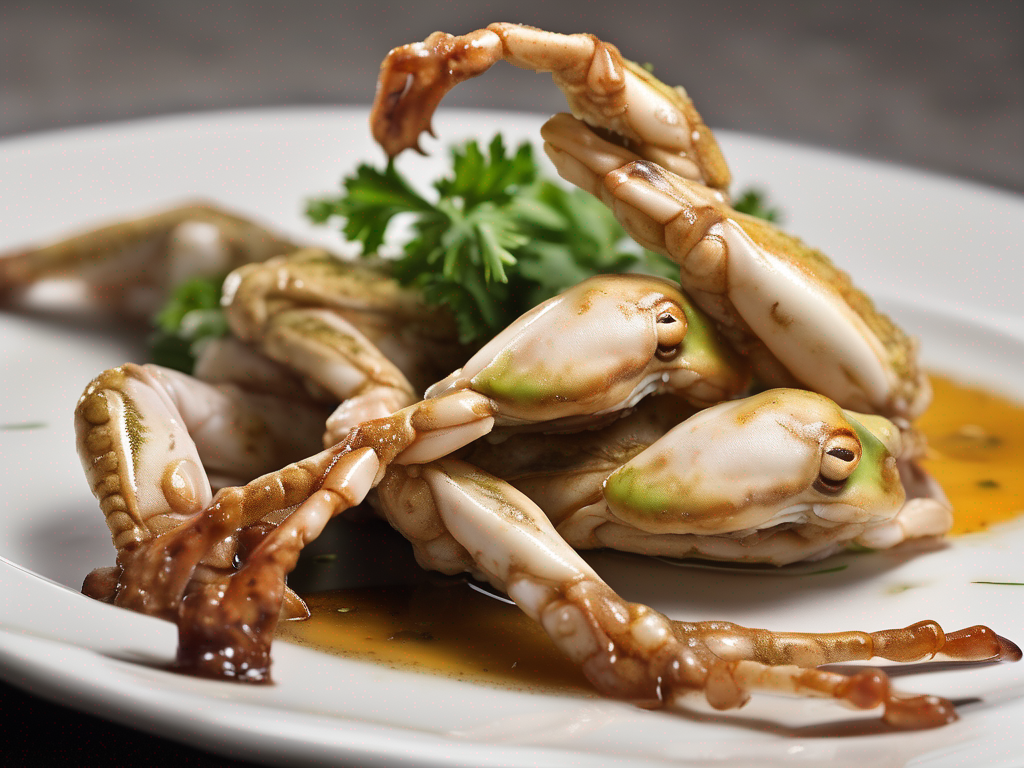
Top Tips for Extending the Shelf Life of Frog Legs Fresh Cooked
Get Your Free Food Safety Cheat Sheet
30 most common foods with instant answers. Print it and stick it on your fridge—completely free!
Top Tips for Extending the Shelf Life of Frog Legs Fresh Cooked
Frog legs are a delicacy enjoyed by many around the world. They are not only delicious but also packed with nutrients. To ensure you get the most out of your frog legs and extend their shelf life, it's important to store them properly. In this blog post, we will provide you with top tips for extending the shelf life of frog legs fresh cooked. (Frog legs fresh cooked)
Understanding Frog Legs Fresh Cooked
Before we dive into the tips for extending the shelf life of frog legs fresh cooked, let's first understand what they are and how they are prepared. [Frog legs fresh cooked](/food/frog legs fresh cooked) are typically seasoned and cooked to perfection, ready to be enjoyed as a savory dish. These delicacies are highly perishable and require proper handling and storage to maintain their quality and freshness.
Tip 1: Proper Storage
Proper storage is key to extending the shelf life of frog legs fresh cooked. Follow these guidelines for optimal storage:
- Refrigeration:
- Store frog legs fresh cooked in an airtight container or sealed bag.
- Place them in the coldest part of the refrigerator, typically the back of the bottom shelf.
- Freezing:
- If you don't plan to consume the frog legs fresh cooked immediately, consider freezing them.
- Wrap the frog legs tightly in plastic wrap or aluminum foil before placing them in a freezer-safe container or bag.
Tip 2: Temperature Control
Maintaining the right temperature is crucial in preserving the quality of frog legs fresh cooked. Follow these temperature control tips:
- Refrigerator:
- Keep the refrigerator temperature at 40°F (4°C) or below to slow down bacterial growth and maintain freshness.
- Freezer:
- Set the freezer temperature to 0°F (-18°C) or lower to ensure the frog legs stay frozen and retain their flavor.
Tip 3: Labeling and Rotation
Proper labeling and rotation practices can help you keep track of your frog legs fresh cooked and ensure you use them before they spoil. Follow these tips:
- Labeling:
- Clearly label the storage containers or bags with the date the frog legs were cooked or frozen.
- Rotation:
- Practice the "first in, first out" rule to use the oldest frog legs first and prevent wastage.
Tip 4: Safe Handling Practices
Maintaining food safety is essential when handling frog legs fresh cooked. Follow these safe handling practices:
- Thawing:
- Thaw frozen frog legs in the refrigerator overnight or use the defrost setting on the microwave.
- Avoid thawing at room temperature to prevent bacterial growth.
- Cooking:
- Cook frog legs fresh cooked to an internal temperature of 145°F (63°C) to ensure they are safe to eat.
- Use a food thermometer to check the doneness of the frog legs.
Tip 5: Monitoring Quality
Regularly inspecting the quality of frog legs fresh cooked can help you determine their freshness and prevent spoilage. Follow these tips for monitoring quality:
- Appearance:
- Check for any signs of discoloration, off smells, or sliminess, indicating spoilage.
- Discard any frog legs that show visible signs of deterioration.
- Smell:
- Fresh frog legs should have a mild, briny smell. Any strong or foul odors may indicate spoilage.
Conclusion
By following these top tips for extending the shelf life of frog legs fresh cooked, you can enjoy this delectable dish for longer while ensuring food safety and quality. Proper storage, temperature control, labeling, safe handling practices, and monitoring quality are essential in preserving the freshness of frog legs. Remember to always practice good food safety habits to enjoy your frog legs fresh cooked to the fullest. (Frog legs fresh cooked)
Related Posts
Here are some other articles you might find helpful:
Authoritative Food Safety References
These agencies and university labs inform every tip and health precaution we publish.
USDA FoodKeeper – Cold Storage Guidelines
Official refrigerator, freezer, and pantry timelines maintained by the U.S. Department of Agriculture.
Visit USDA FoodKeeperFDA Produce Safety Rule & Grower Guidance
Field-to-fridge handling practices that prevent contamination of fruits, vegetables, and leafy greens.
Visit FDA Produce SafetyCDC Foodborne Illness Prevention Hub
Surveillance-backed guidance on pathogens, symptoms, and steps to reduce foodborne illness risk.
Visit CDC Food SafetyUC Davis Postharvest Technology Center
University research detailing optimal storage atmospheres for produce after harvest.
Visit UC Davis PostharvestPenn State Extension – Home Food Preservation & Safety
Peer-reviewed extension bulletins on safe canning, chilling, and reheating practices.
Visit Penn State ExtensionGet Your Free Food Safety Cheat Sheet
30 most common foods with instant answers. Print it and stick it on your fridge—completely free! Want more? Upgrade to the complete guide with 70+ foods.
Scan your food directly and get instant safety info using our AI-powered camera feature.